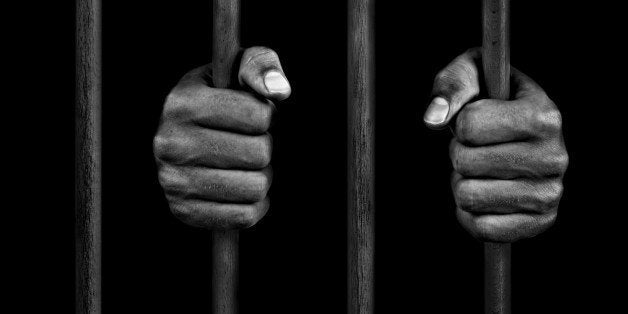
The shortage of traditional execution drugs available in American death penalty states has sparked serious health, safety and human rights concerns with the adoption of new lethal injection protocols relying on unregulated and untested execution drugs.
Most United States executions are lethal injections, which traditionally involve administration of a combination of three drugs: an anesthetic like sodium thiopental or pentobarbital to render the prisoner unconscious; a muscle relaxant like pancuronium bromide to paralyze the prisoner; and potassium chloride to stop the prisoner's heart. In recent years, some states have moved to a single execution drug protocol involving administration of a lethal dose of an anesthetic like pentobarbital or propofol.
Over the past several years, however, execution drugs have become harder for death penalty states to obtain as European drug manufacturers have faced mounting pressure to stop supplying lethal injections drugs to the U.S. The United Kingdom charity Reprieve's Stop the Lethal Injection Project (SLIP) has successfully led efforts to convince European manufacturers to cease production or shipment of drugs to U.S. prisons for executions. In January 2011, for example, American drug company Hospira stopped manufacturing sodium thiopental at its Italian plant, citing its desire not to supply the drug for U.S. executions. Similarly in 2011, Danish pentobarbital sodium manufacturer H. Lundbeck A/S ceased selling the drug to U.S. prisons in death penalty states. And in 2013, German manufacturer Fresenius Kabi, which supplies 90 percent of all U.S. propofol, halted shipments to a Louisiana distributor amid concerns that its drugs were being used not only in routine medical procedures, but in executions.
Pressure from European human rights groups and boycotts by European drug manufacturers led the United Kingdom to ban the export of drugs to the U.S. for executions in 2010, with the European Union instituting a similar ban in 2011. U.S. execution states reacted in varying ways, with states including North Carolina, Arkansas and California temporarily halting executions based on the lack of feasible lethal injection protocols. In fact, year-end figures recently released by the Death Penalty Information Center (DPIC) put 2013 U.S. executions at 39, the lowest since 1994, which the DPIC attributes to the lack of execution drugs. Other states including Missouri, Texas, Florida and Ohio have continued lethal injections by turning to new and untested execution drug alternatives, raising serious health, safety and human rights concerns.
A primary way states have continued executions despite the drug shortages has been reliance on compounding pharmacies to custom blend execution drugs. Texas, for example, purchased pentobarbital from a Houston compound pharmacy after its supply of execution drugs ran out. Missouri similarly turned to a compound pharmacy for pentobarbital for the 2013 execution of Joseph Franklin. And Georgia is believed to have been purchasing pentobarbital from a compound pharmacy for the planned execution of Warren Hill, but kept the source of its execution drugs a "state secret" under Georgia law. In each case, states were reluctant to disclose their use of compound execution drugs. But why would states obscure the sources of their execution drugs? The answer is that states are reluctant to volunteer reliance on compound pharmacies because they are aware of growing health and safety concerns.
Compound pharmacies and the drugs they produce for patients have been largely unregulated by the Food and Drug Administration (FDA). Regulation has been primarily left to individual state Boards of Pharmacy, meaning there has been a lack of universal safety and enforcement standards. After a fatal 2012 fungal meningitis outbreak was traced to a Massachusetts compound pharmacy, then-Congressman Edward Markey (D-MA) launched a national review of state compound pharmacy regulations, finding that few states maintained clear safety records; that available safety records were often vague or incomplete; and concluding that state regulators were incapable of adequately regulating compound pharmacies. And a 2013 briefing by the U.S. National Conference of State Legislatures echoed concerns about leaving compound pharmacy regulation to the states, citing the lack of uniform facility inspection standards, absence of universal enforcement protocols, unknown funding sources, and lack of transparency in maintaining and making available facility records.
The medical and pharmaceutical communities have similarly expressed practical concerns about compound pharmacy drugs, including the inability of ensuring that drugs are properly calibrated and produced using clean equipment; the difficulty of verifying that pharmacy staff possessed the requisite pharmaceutical knowledge, training and skills when making the drug; the challenges of knowing whether ingredients were legally obtained from reputable sources; and the problems with checking whether drugs were properly tested for quality, effectiveness and continued potency over time.*
Amidst the widespread unease about the lack of regulation of US compound pharmacies and compound drugs, President Obama signed the Drug Quality and Security Act of 2013 in November, which bolsters the FDA's role in certain aspects of compound pharmacy drug regulation, but continues to rely on State Boards of Pharmacy for day-to-day oversight and regulation. Thus, despite the steps taken with the new law, serious health and safety concerns about execution drugs remain.
While some states have turned to compound pharmacy drugs as a result of the execution drug shortage, other states are using untested drugs for lethal injections. Florida, for example, carried out the 2013 execution of William Happ using anesthetic midazolam hydrochloride (instead of sodium thiopental) as the first drug in the three-drug execution protocol, reportedly causing Happ to make a significant number of body movements which were considered by witnesses to be more intense than executions conducted with standard execution drugs. And Ohio has sought to conduct executions with a lethal dose of painkiller hydromorphone, which medical experts including Ohio State University College of Medicine Professor Jonathan Groner said can cause "an extreme burning sensation, seizures, hallucination, panic attacks, vomiting, and muscle pain or spasms." Without established protocols for untested execution drugs like midazolam hydrochloride and hydromorphone, states are merely guessing about the necessary dosages and potential side effects of these alternative drugs, and very possibly getting it wrong.
But why be concerned if states turn to compound pharmacy drugs or untested alternatives to execute convicted killers? Not only do these drugs implicate health and safety, but they also raise questions about the amount of suffering inmates are enduring during executions. While many may be unsympathetic to the suffering of convicted killers, the U.S. Constitution's Eighth Amendment protects all people from infliction of "cruel and unusual punishments." The text of the Eighth Amendment and its subsequent interpretations in American courts have established minimum standards for basic fairness and human rights that must govern executions so long as they remain legal in the U.S. If Eighth Amendment protections are not observed, even for convicted killers, they become meaningless. And the current flurry of cases being filed by death row inmates fearing they will suffer when executed with compound or alternative execution drugs will not cease so long as there is an execution drug shortage in the U.S.
In light of the significant concerns about the health and safety of compound and alternative execution drugs, along with serious human rights implications stemming from their continued use, now is the time for U.S. execution states not to contemplate new ways to conduct lethal injections, but to follow the lead of the 18 U.S. states that have already banned executions altogether.
______________
*Note: See, e.g., Gudeman, J; Jozwiakowski, M; Chollet, J; Randell, M, 2013, 'Potential Risks of Pharmacy Compounding', Drugs R D, Vol. 13, pp. 1-8; Wilson, LE; Blythe, D; Sharfstein JM, 2012, 'Fungal meningitis from injection of contaminated steroids: a compounding problem', Journal of the American Medical Association, Vol. 308, No. 23, pp. 2461-2.
